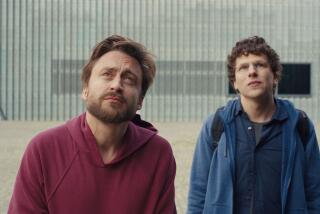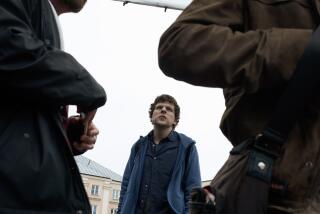ARTIST RUTH WEISBERG : CRADLED IN LEGACY OF THE HOLOCAUST
Ruth Weisberg was in her 20s when she first saw her grandmother’s “memorial” book. Turning page after page in the thick, black book about the Polish Jews who perished in the Holocaust, Weisberg could not believe what she was reading. And, recalls her mother, Theresa Weisberg, Ruth could not stop crying.
Weisberg has continued crying for those lost Jews, sometimes in print but most often on canvas. From the book on a Polish shtetl , which she wrote and illustrated in 1971, to work still drying on the floor of her Venice studio, Weisberg’s artworks are cradled in the legacy of the Holocaust and especially its children.
“We don’t live simply in the present,” Weisberg explains. “We are accompanied by our memories, our ancestors, heritage and history.”
Few people, however, are as accompanied as Weisberg. Calling herself such things as a “post-Holocaust person” and a “witness to history,” Weisberg clearly does not see life as finite.
In Weisberg’s current exhibition at the Jack Rutberg Gallery, drawings and prints have such titles as “Passage,” “ Exile,” “Turning Point” and “Looking Back.” Just inside the front door of the gallery, an artist’s statement on the wall begins with this sentence: “My work demonstrates intense interest in the cycle of life, the continuity of generations, and issues of survival and impermanence.”
This is art with a message, and Weisberg is as visible a messenger onstage as she is offstage. The artist’s face, and often her full body, figure prominently in pieces inspired by her pregnancy, loss of her father and study abroad.
Her husband of 19 years, psychologist Kelyn Roberts, has appeared in her work, and so has her daughter Alicia, 12. In addition to consciously painting her son Alfred, 8, the artist discovered one day that Alfred bears a striking resemblance to a child she drew four years before he was born.
“If the premise of your work is that it is deeply entrenched in your life and your experience, then the particulars--the specificity--of your life can be transformed into something universal,” Weisberg says.
It helps, of course, that Weisberg has had a fairly rich life. Visible within local art and feminist communities, the USC professor was raised in what she calls a “leftist artistic milieu.” Weisberg initially immersed herself in the Holocaust in the late ‘60s, using a Ford Foundation grant to first research, then write and illustrate her book on the Polish shtetl. Published in a limited edition by the Kelyn Press in 1971, “The Shtetl, a Journey and a Memorial,” contains nine original prints. The faces of Holocaust children whom she has since drawn and painted several times appear first in its pages.
The 1971 book, says Weisberg, is “how I found my voice.” And it crystallized her philosophy that she is “a resting place for those souls, those children. I feel it’s my life’s journey in place of theirs. And that being so, I have to do something really important. “
Past and present exist for Weisberg in what she considers a “parallel reality.” Prominent in a drawing of the destroyed synagogue at Danzig, for instance, her daughter Alicia serves as not only a bridge to the present but a “witness to our survival.” A face in a crowd of schoolchildren’s faces is a child of Danzig “but it is also Connie, a girl who went to school with me, “ Weisberg says. “(I am) collecting faces and breathing life into them and letting them look back at you here in 1985 and 100 years down the line.”
It is a feeling that Weisberg nurtures by such devices as intentionally avoiding contemporary dress or hair styles, and Weisberg, too, seems somehow timeless, her face and dress neither contemporary nor dated. Her studio isn’t particularly old or new, and the cluttered interior of her 75-year-old bungalow near the beach seems to be simultaneously untouched and updated.
Weisberg’s next project, an 85-foot painted scroll commissioned by Hebrew Union College in New York, weaves together her feminist and Jewish concerns, doing so in a more religious context than before. “There is a lot of ferment in the Jewish faith that there should be more inclusion of women and I want to be part of that,” she says. “I hope I’m going to really affect people’s consciousnesses.”
More to Read
The biggest entertainment stories
Get our big stories about Hollywood, film, television, music, arts, culture and more right in your inbox as soon as they publish.
You may occasionally receive promotional content from the Los Angeles Times.










